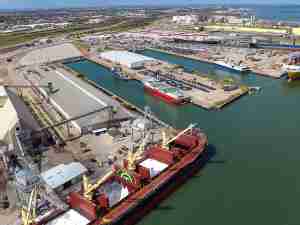This will widen and deep the canal to accommodate larger vessels taking cargoes to the Pacific.
The expanded canal will mainly be used for container traffic and had been expected to open the door for increased Colombian and U.S. coal exports to the Pacific.
However, the expanded canal will not accommodate the capesize 150,000 tonne vessels, most often used for long-haul coal trade.
These will continue to go south around the tip of Latin America and on to the Pacific, while freight rates remain cheap.
Dimensions
- The expanded canal will accommodate ships of up to 170,000 tonnes deadweight (dwt) beam, up to 49 metres length.
- The transit draft will increase from 12 to 15 metres.
- Modern capesize vessels of 170,000 dwt are generally 45 metres beam but when fully laden, the draft increases to 18 metres.
- This means that the expanded canal can only take partly laden capesize vessels, losing around 35,000 tonnes of cargo or offload and reload at each end of the canal. The cost of doing this makes the economics doubtful of using capes.
- New post panamaxes such as the Tana Sea, which has just been delivered, would be ideal ships to transit the expanded canal because they can load a full cargo.
The Tana sea is 92,500 dwt, has a 14.9 metres draft, 230 metres in length and beam 38 metres.
- Few panamax bulk carriers currently use the canal and even fewer carrying coal because the standard panamax size for coal cargoes is 75,000 tonnes, too large for the canal at present.
- Aframaxes will also be able to transit fully laden, a modern one being typically 115,000-dwt.
- The main shipping beneficiaries could be large boxships such as the MSC Luciana, which could transit with a full cargo.
- Larger container ships would also be able to transit either in ballast or with lighter volume-based rather than bulk.
- The expanded canal is not expected to have much effect on voyage rates when time charter rates are depressed but it could affect rates in a stronger market and decrease the volatility of rates on West to East voyages.










